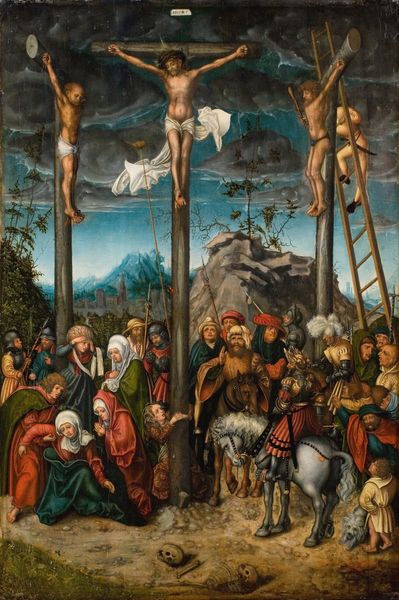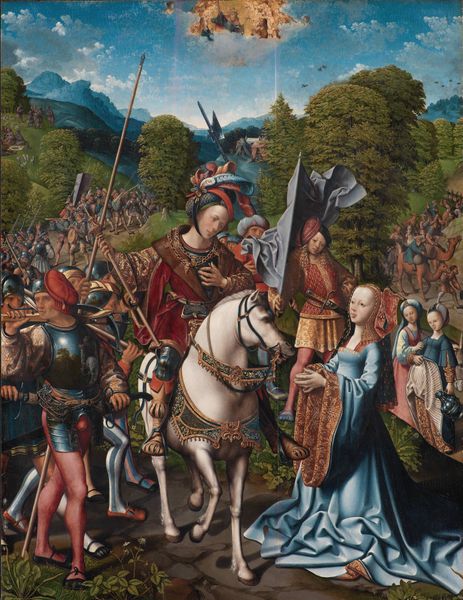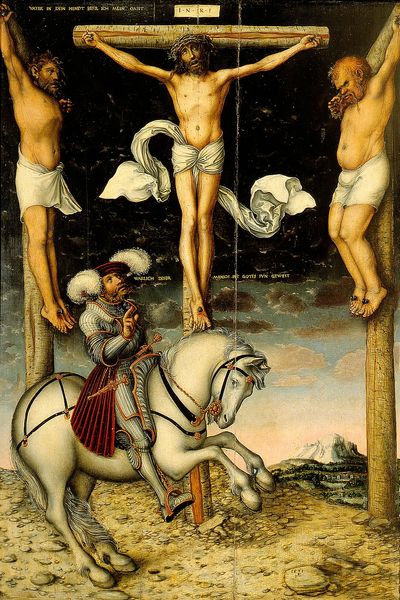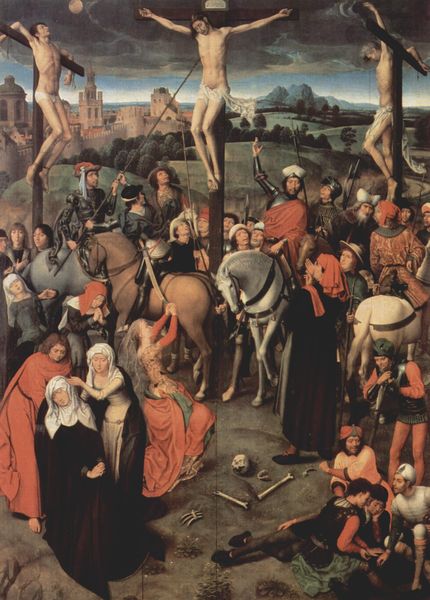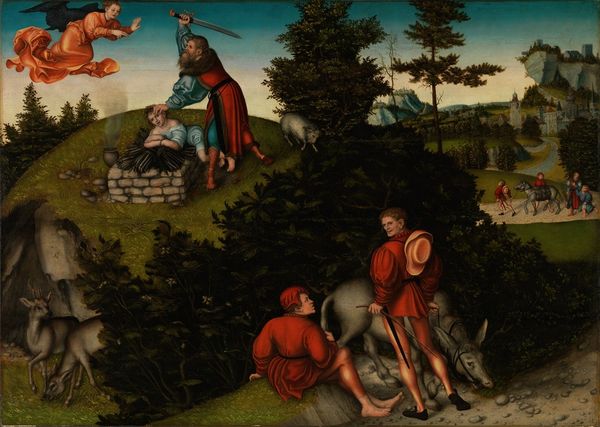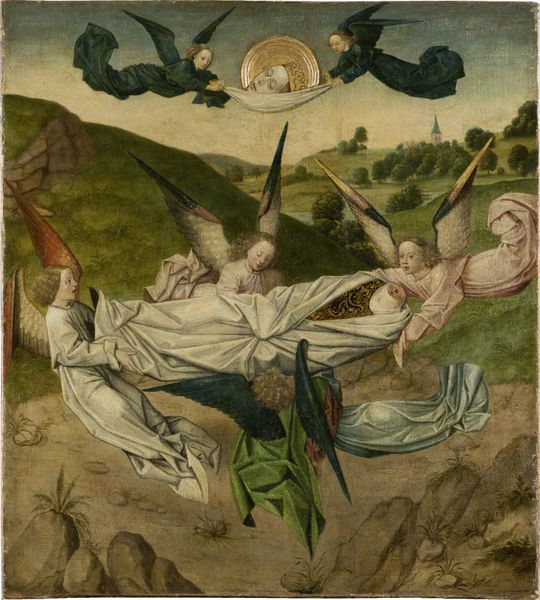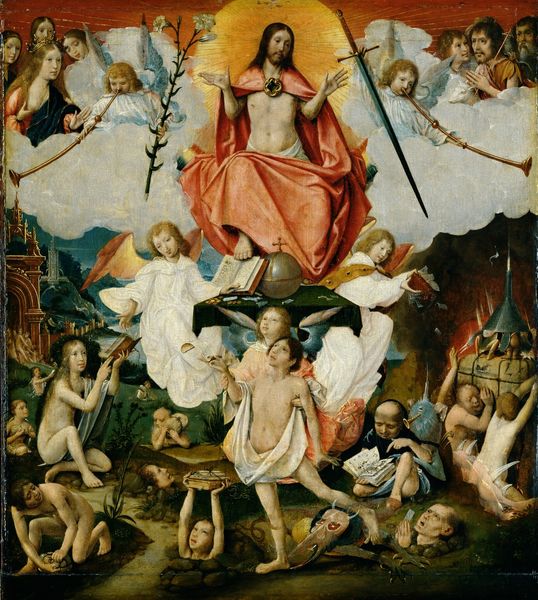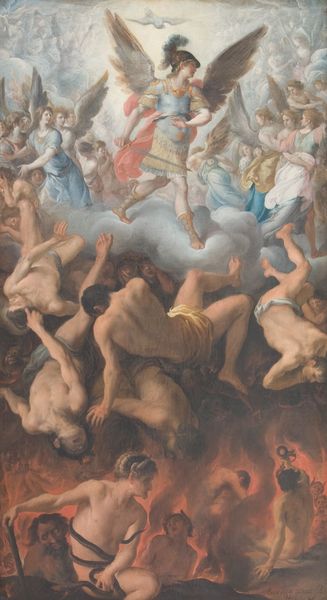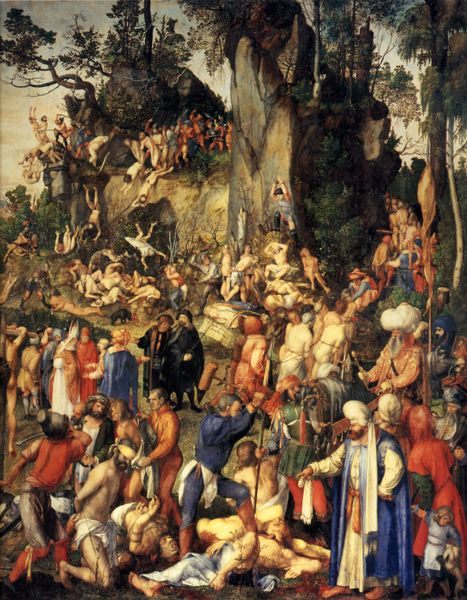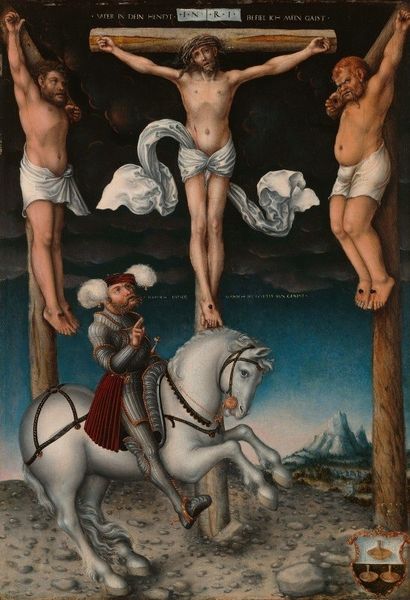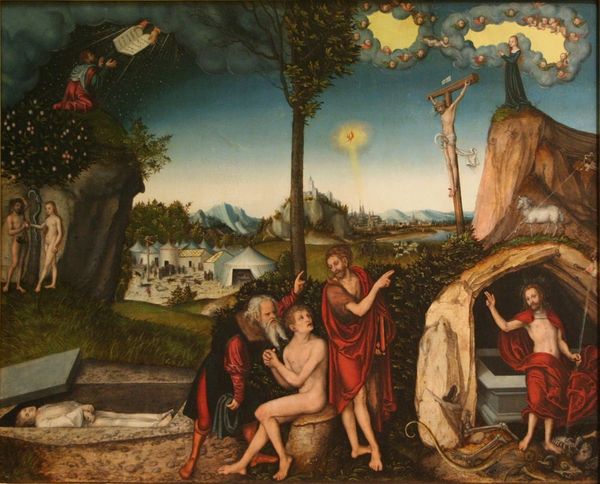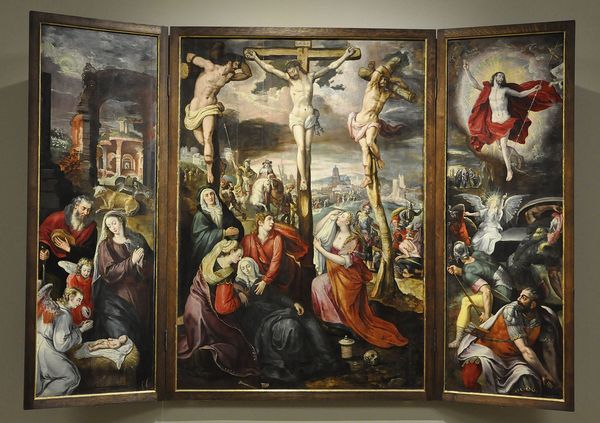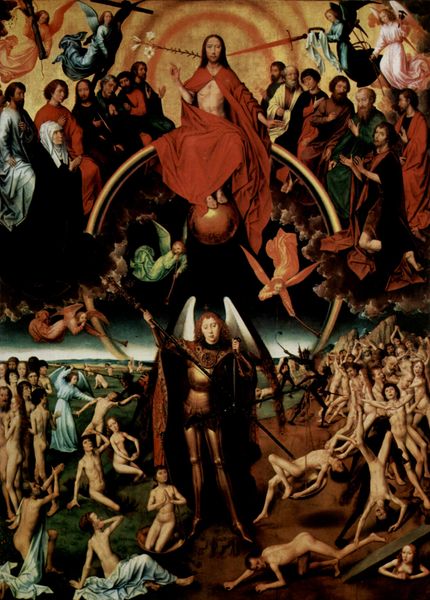
painting, oil-paint
#
portrait
#
germany
#
narrative-art
#
painting
#
oil-paint
#
figuration
#
genre-painting
#
history-painting
#
northern-renaissance
Dimensions: 47 3/4 × 32 1/2 in. (121.1 × 82.5 cm); painted surface: 47 × 32 1/2 in. (119.4 × 82.5 cm)
Copyright: Public Domain
Editor: Before us is Lucas Cranach the Elder’s “The Crucifixion,” an oil painting from 1538. Curator: The overall feeling I get is one of oppressive density. There’s an almost claustrophobic crowding of figures beneath the crosses. Notice how Cranach utilizes the stark contrast of the figures against the tumultuous sky to amplify the tension. Editor: It's interesting how Cranach synthesizes Christian iconography with very earthly and local visual codes. We see the central scene of Christ's crucifixion, flanked by the two thieves—traditional elements—but the people below, they're rendered in very specific contemporary dress. That adds a very strong element of commentary about his present day. Curator: Yes, observe the layering of forms—the spears create strong diagonal lines that converge toward Christ, which leads the eye directly to the emotional and structural core of the piece. This use of perspective creates both a physical and psychological sense of depth, compelling us to empathize with the central figure. Editor: The repetition of upward-pointing lances and sorrowful faces definitely compels the viewer to meditate on the consequences of human actions, which Cranach may have intended given his ties with the Protestant Reformation. Even the landscape almost seems to participate in the drama; do you note the tumultuous, roiling clouds gathering around the scene? Curator: And isn't the limited color palette contributing significantly to the overall sobriety? Cranach relies primarily on earthy tones—ochre, browns, greys. He saves the brighter hues to highlight specific moments or figures like the mourning figures gathered near the lower-left quadrant. Editor: Yes! Color becomes a carrier of meaning here. In their grief, the figures huddled in blue garments recall the symbol of Mary, as intercessor, as symbol of hope in face of pain, reinforcing that even in dark times there is always light that persists and guides. Curator: The dynamism achieved through these compositional decisions underscores the inherent paradox of the scene: tragedy is shown with a promise of redemption. Cranach brilliantly exploits visual and symbolic languages, in order to create an almost suffocating emotional density in what he's rendering on this surface. Editor: It’s remarkable to note the detail with which the painter explores a universally relevant theme by way of this single historical moment. Curator: A powerful exercise in both pictorial construction and dramatic articulation, undoubtedly.
Comments
No comments
Be the first to comment and join the conversation on the ultimate creative platform.
